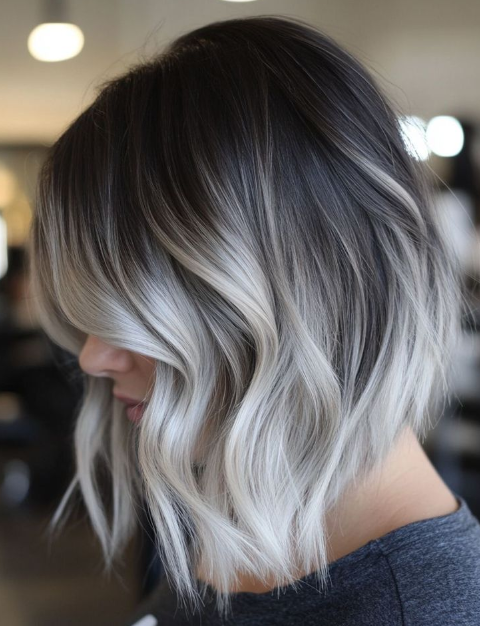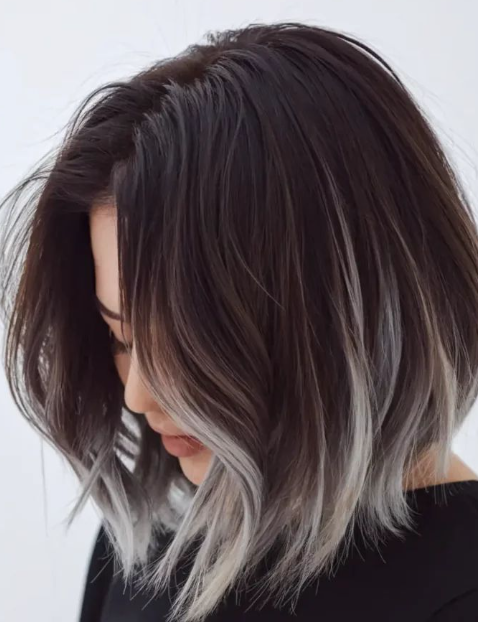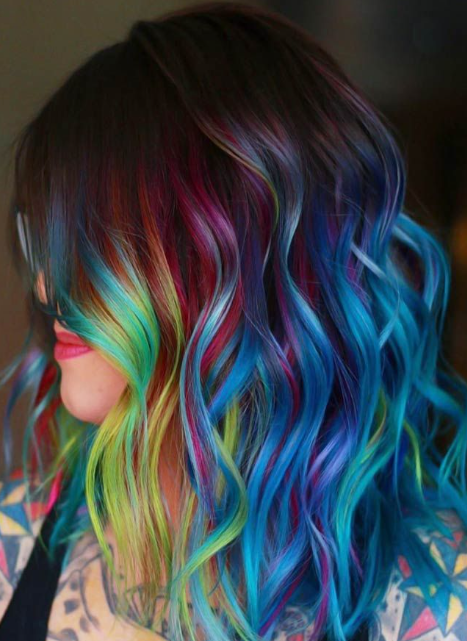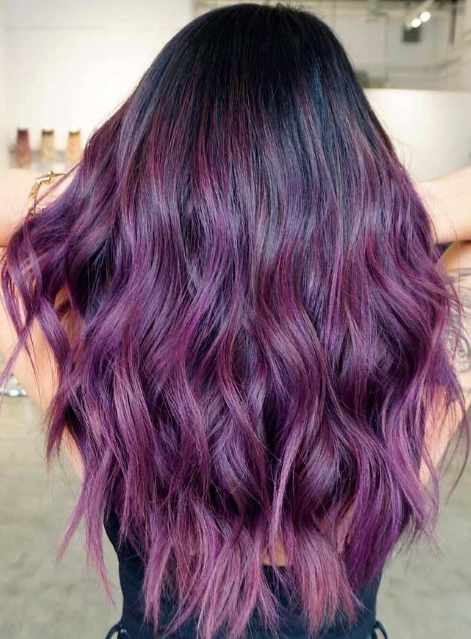Balayage vs Ombre - Balayage and Ombre Differences and Hair Color Ideas 2025
When choosing the best hair dyeing techniques, balayage and ombré are among the most trending options. There is no best choice for everybody, considering the differences between balayage and ombré, choose the one more suitable for you. We’ll also introduce some great ombre and balayage hair color ideas in 2025.
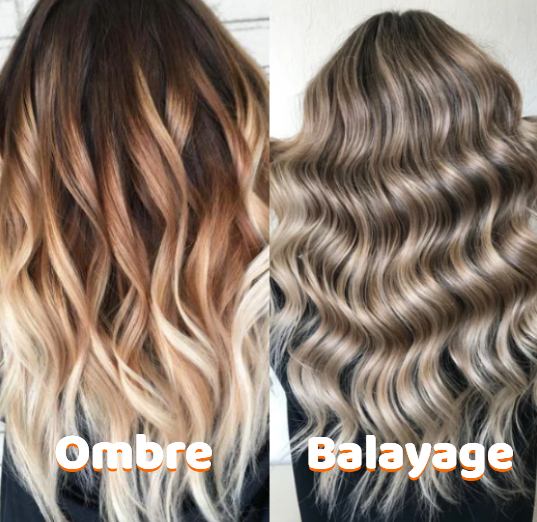
What Is Balayage?
Balayage is a popular hair coloring technique, with its name derived from the French word "balayer" meaning “to sweep.” This freehand painting method involves a stylist carefully sweeping or hand-painting color directly onto select strands of hair, typically starting a couple of inches away from the roots and becoming more concentrated toward the ends. Balayage focuses on the surface of the hair, leaving the underside darker. So Balayage can create a soft gradient where color transitions gently from darker roots to lighter ends, which mimics how hair naturally lightens in the sun. Furthermore, the color is applied away from the scalp, so new hair that grows can blend the color well without harsh lines, which makes Balayage hair relatively low-maintenance. You can also utilize this technique to leave a base shade and brighten dull areas.
Balayage vs Highlights
Balayage and highlights mainly differ in the color application method. To do the balayage, stylists often use a brush or similar tool to paint the color on the hair, starting from a position that is several inches from the hair root, and apply toward the ends, so no areas will be missed. Highlights involve dividing the hair into separate sections and applying the color on the scalp using foil. Compared to traditional highlights, balayage is a lower-maintenance option and basically less damaging, because it uses less hair dye and has no chemicals on the scalp.
Will Balayage Damage My Hair?
The answer would be yes. Balayage is generally gentler than traditional foil highlights because it uses less dye and avoids direct contact with the scalp, which helps reduce damage. However, since it still involves chemicals, it can dry out your hair and make it more prone to breakage, especially if your hair is already fragile or has been treated before. The amount of harm depends on factors like your hair’s condition, how often you color it, the quality of products used, and the experience of your stylist. To keep your hair healthy, it’s important to prep your hair by moisturizing and avoiding heat styling before the treatment, choose a skilled professional, and use nourishing shampoos, conditioners, and deep masks designed for color-treated hair afterwards. While balayage is less damaging than some methods, it’s not completely risk-free, so taking good care before and after coloring will help your hair stay shiny, strong, and beautiful longer.
Is Balayage Good for Short Hair?
Balayage is versatile and works well on all hair lengths, including short hair. On short styles, balayage adds contrast, texture, and dimension, enhancing the haircut’s shape and creating an edgy look. It can also boost volume and bring visual interest to cropped cuts, which makes the short hair appear more stylish.
Who Should Get a Balayage?
Balayage works well for most hair types and colors, especially medium to light brown or blonde shades, and can even blend in grays subtly. Balayage adds depth and dimension, making fine hair look fuller, and enhances your skin tone with a warm radiance. It’s low maintenance, so you don’t need frequent salon visits; touch-ups every 8 to 12 weeks are usually enough, and using toner or purple shampoo at home helps keep the color fresh. However, if your hair is very dark or very light naturally, or if it’s already damaged or fragile, balayage might not be the best option since it still involves some chemicals.
Types of Balayage Techniques
Full Balayage
Full balayage is the classic and most popular balayage technique. It involves painting highlights throughout the entire head, from roots to ends. This method gives maximum brightness and a sun-kissed glow that looks natural yet striking.
Partial Balayage
Partial balayage offers a more subtle approach by concentrating highlights only on the top and outer layers of the hair, leaving the underneath layers in your natural color. This technique creates a higher contrast between dark and light tones, and it is more suitable for beginners or those wanting a softer change.
Face Framing Balayage
Face-framing balayage focuses exclusively on the strands around your face to accentuate your features. The highlights are painted from root to tip on the front pieces, brightening up your face.
Reverse Balayage
Also known as inverted balayage, reverse balayage adds lowlights near the roots and throughout the hair. Instead of bright highlights, this method uses darker tones to enrich blonde or bronde bases. The effect sits between balayage and ombré.
Freehand Balayage
Freehand balayage is the artistic core of balayage coloring. The stylist paints the color directly onto the hair without foils or strict sectioning. This technique uses backcombing at roots to blend highlights smoothly, with no obvious segmentation.
Ombre Balayage
Ombre balayage combines the classic ombré style’s gradient color shift with balayage’s soft, painted highlights. The color changes distinctly around the mid-lengths but blends smoothly. Sombre balayage is a softer, more subtle version of ombré balayage, using colors just a shade or two lighter than the base. This creates a natural, barely-there highlight effect with gentle transitions.
Babylights Balayage
Babylights use very fine, delicate highlights painted on tiny hair sections, especially around the hairline, to mimic the natural lightness of children’s hair.
What Is Ombré?
Ombré is another hair coloring effect that also finds its roots in French, where the term means “shaded” or “graduated.” Unlike balayage, ombré refers to a distinct two-toned color gradient where the hair is darkest at the roots and gradually lightens towards the ends. This creates a dramatic contrast between the top and bottom sections of the hair, with a smooth blend of shades in the mid-lengths. The ombré color technique typically involves saturating the ends with a lighter color while keeping the roots in a darker, natural shade. Ombre does not need frequent touch-ups as well since the roots remain dark, and new hair growth can blend naturally with the existing color. However, the initial coloring process can be extensive and typically involves bleaching the ends, which may cause damage if the hair is dry or fragile. Ombré also offers a vast range of color possibilities, from natural blondes and brunettes to bold, unconventional hues like pink, blue, or green.
Is Ombre Hair High Maintenance?
Ombre hair is actually one of the easiest and most low-maintenance color styles you can try. Because the lighter or different shade usually starts somewhere below the roots, often around the mid-lengths or ends, you don’t have to worry about constant root touch-ups like you would with full-head dye jobs. This means you can let your natural color grow in freely without seeing harsh lines or needing frequent salon visits. Plus, since the color is applied mostly on the ends, it causes less damage to your hair overall. To keep your ombre looking fresh for longer, you just need to wash your hair a bit less often and avoid shampoos that strip color. Regular trims help too, since they remove split ends and keep the gradient smooth.
Is Ombré Hair Still in Style in 2025?
Ombré hair is definitely back in style for 2025. Unlike balayage or dip-dye, ombré creates a smooth gradient from darker roots to lighter ends, offering a cool shaded effect that grows out nicely. This year, trends like “ghost roots” (light at the top fading to dark tips) and soft pastel tones such as lilac or peach are super popular, giving you lots of options whether you want a subtle change or a bold, colorful look. The best part? You can customize ombré to fit your skin tone perfectly, fair skin shines with ash blonde or rose gold, warmer tones look amazing with caramel or honey, and deeper skin glows with rich reds or bronze shades. While any hair coloring can cause some damage, ombré is gentler since it mostly affects the ends, leaving roots healthy.
How to Ombre Hair at Home?
Prepare your space and protect your clothes by wearing an old t-shirt and covering surfaces with towels or plastic to avoid stains.
Gather your supplies: hair dye (choose a brand made for good, even coverage), mixing bowl and brush, comb, plastic gloves, aluminum foil, hair clips, shampoo, and conditioner.
Mix the hair dye according to the instructions on the box and put on gloves to keep your hands clean and safe.
Divide your hair into sections by splitting it into four big parts, then dividing each into smaller sections so you can work carefully and neatly.
Start painting the dye on the mid-lengths and ends of your hair using the brush, then gently backcomb the area where the dye meets your natural hair for a smooth, blended look without harsh lines.
Wrap each dyed section in aluminum foil to keep the color separated and avoid bleeding onto other hair.
Repeat the coloring and wrapping process until every section is covered, then leave the dye on for the time recommended on the box, checking the color by unwrapping a foil piece occasionally.
Rinse your hair thoroughly once you are happy with the color, then wash and condition to remove leftover dye and keep your hair soft.
For a more creative or multi-toned ombré, use different shades and apply the darkest color near the roots, a medium shade in the middle, and the lightest shade on the ends, blending carefully where the colors meet.
Let your hair color develop for about 15 minutes before rinsing when using color conditioners or toners to refresh faded ombré styles at home.
Balayage vs Ombré - Differences Between Balayage and Ombre
Ombre or balayage? They are both trendy coloring techniques to get various stunning shades on your hair and can also be mixed to achieve a new look. However, they differ from each other in visual effects and a lot of other aspects. Balayage tends to apply hair color on the surface, but ombre hair shows obvious two tones, deeper at the top (hair roots) and lighter at the bottom (hair ends).
| Difference | Balayage | Ombre |
|---|---|---|
| Application Method | A freehand painting of highlights on mid to ends for a natural, blended look without foils | Uses sectioned application with bleach from ends upward for a gradual fade, often with foils |
| Color Placement | Customized, scattered highlights | Two-toned effect with stark contrast between roots and ends |
| Visual Effect | Soft, blended look with subtle dimension | Dramatic, high-contrast fade with noticeable demarcation |
| Maintenance & Regrowth | Grows out naturally with minimal visible regrowth; touch-ups every 12–14 weeks | More frequent upkeep is needed; regrowth can appear obvious |
| Damage Level | Less damage to the surface application on fewer sections | More extensive lightning of ends; higher potential for damage |
| Hair Length Suitability | Works well on all lengths, including short and medium hair | Most effective on long hair to showcase the gradient |
| Customization & Dimension | Tailored highlights that blend seamlessly with natural hair | Lacks dimension between shades; focuses on bold transitions |
| End Result Flexibility | Can create various effects (like face-framing highlights) | Limited to dark-to-light or color-blocked styles |
When it comes to the better choice, go with the one you need.
Choose balayage if:
You prefer a natural, sun-kissed look with dimensions.
You want less maintenance and fewer salon visits.
You like soft, blended highlights.
You want a less damaging color technique.
Choose ombre if:
You want a clear contrast on your hair.
You do not mind frequent upkeep to maintain the gradient.
You have very long hair and want to show the full gradient effect.
Trending Balayage Hair Colors 2025
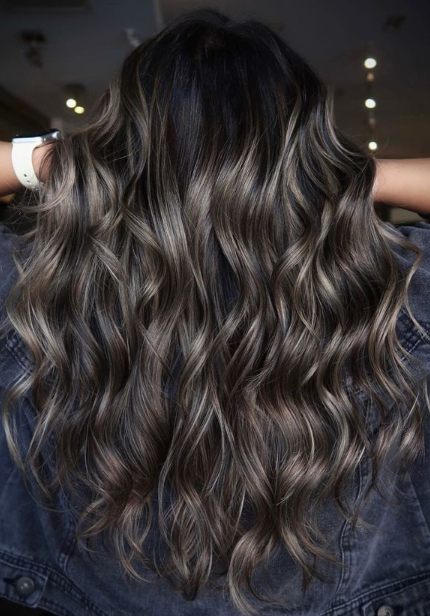
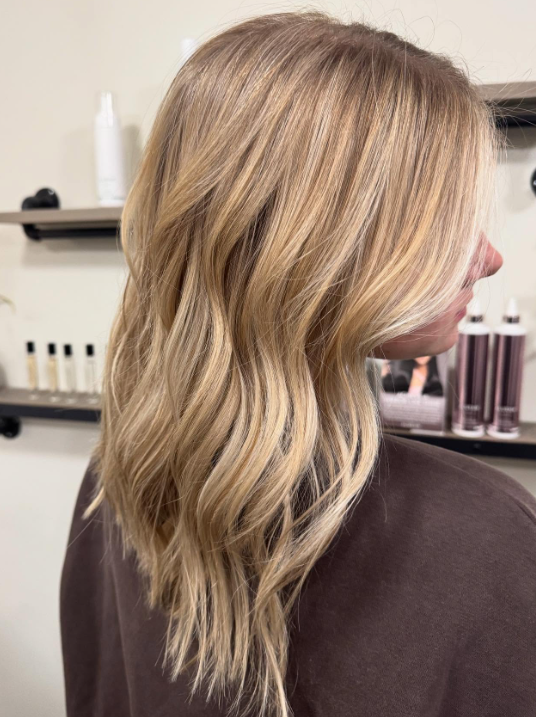

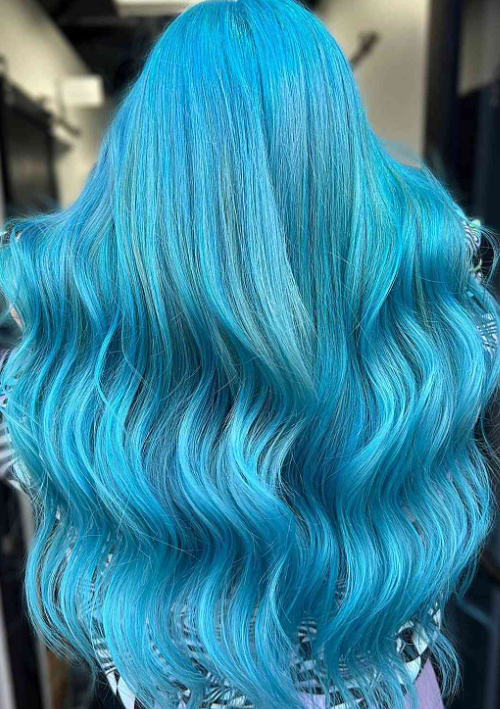
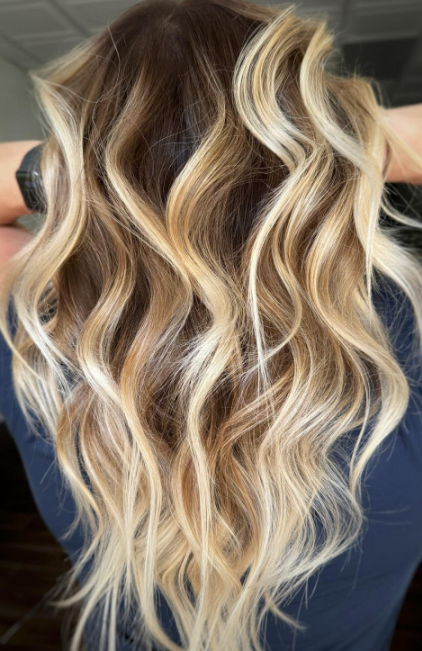
Popular Ombre Hair Colors 2025
